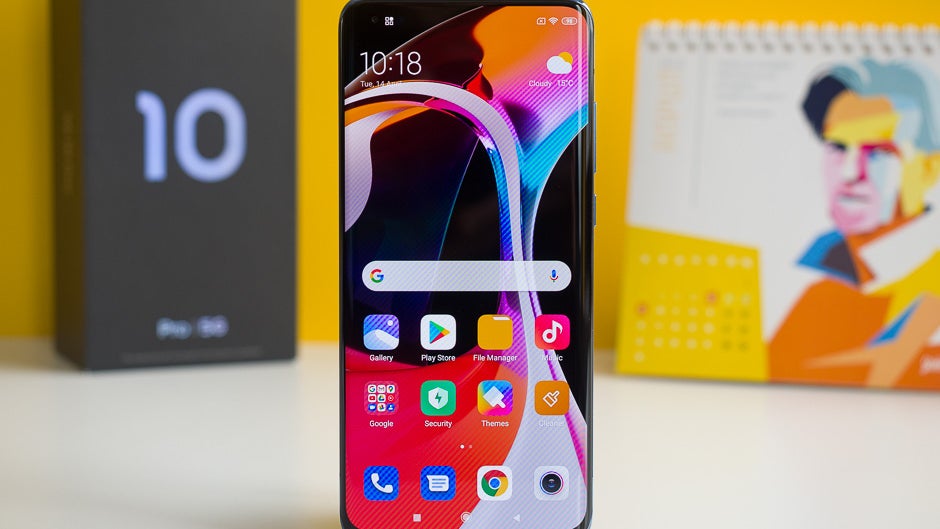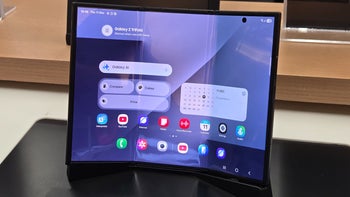Xiaomi Mi 10 Pro Review

Summary
The Mi 10 Pro is Xiaomi’s flagship for 2020 and from every angle, it’s a worthy competitor to the other major players in the Android space. It relies on its 108MP camera to grab people’s attention, but the massive sensor doesn’t bring the massive gains in image quality people might expect.
Design & Display
The design of the Mi 10 Pro is, well, modern and predictable. It seems this year all the Android flagships are converging towards one look and this phone is no exception. Glass on the front and back, curved display edges, hole-punch selfie camera on the front and four on the back.
The build quality is as good as any other flagship, no complaints there.
The display is a 6.67-inch AMOLED with a resolution of 2340x1080 and a 90Hz refresh rate. Yes, it’s not 1440p but even Samsung has its phones set to 1080p by default. The truth is, the difference is barely noticeable.
The display of the Mi 10 Pro is a joy to look at, and the software offers more adjustments than 99% of the users will need. You can manually adjust the white balance of the display or set it to automatic, which will adjust it based on your environment (like True Tone on iPhones), choose how saturated the colors are and much more.
Camera & Audio
Cameras are what makes or breaks a flagship these days so naturally a big focus goes on them. The Mi 10 Pro has four rear cameras: а 108MP main sensor, a 20MP ultra-wide-angle camera that’s also used for Macro shots and two telephoto cameras, one with 2x zoom and one with 3.7x zoom. The phone switches dynamically between the telephoto cameras.
Before we talk about each camera, some overall impressions. I wasn’t very pleased with Xiaomi’s camera software. The buttons to switch between the cameras are tiny, and besides the flower icon for the macro mode, they have no indication of what you’re switching to. Zooming beyond the set 2x and 5x is also a hassle. If you’re taking pictures with AI and HDR turned on, the camera might occasionally crash. The phone also often seems unsure about the colors of the object you’re photographing. Sometimes you can see how it’s changing between two very different color settings and that’s with AI off. Results vary from scene to scene, so keep that small inconsistency in mind.
The 108MP camera is the main star of the show. By default, the photos it takes are 25MP; for 108MP you have to use the dedicated mode. One major drawback of this sensor is its shallow depth of field. Check the example below:

Sample picture showing the shallow depth of field
The blossoms in the middle of the picture look crisp and detailed but as you move away blurriness quickly takes over. This effect is useful in certain scenarios but for the versatility required of a smartphone’s camera, it’s not ideal.
Because the default resolution is 25MP, the benefits of the dedicated 108MP mode aren’t extreme either. In most cases, you can’t even tell the difference between the two.
Below you can see a 200% zoom crop of the default mode photo versus the actual size crop of the 108MP one. While the 108MP does have more detail, the gains are almost insignificant.
At reasonable zoom levels, up to 5x, the Mi 10 Pro is doing a very decent job, no complaints there. Not sure if it warrants two telephoto cameras, though. OnePlus has been doing portrait shots with a 3x zoom camera quite successfully and it would have been a nice compromise.
The ultra-wide camera gives satisfying results as well. The macro mode is good to have but not really a selling point.
When it comes to night mode, the Mi 10 finds a good balance between brightness and keeping the mood of the night shot on point. The phone does struggle a bit with the white balance at night as well, but overall, you’ll be happy with the low-light photos it takes.
The 20MP selfie camera is on point as well, although there is some skin smoothing going on even when beauty filters are off. HDR works great, though, it managed to keep even the brightest spots under control.
In the video department, things are looking alright. Video stabilization is good even at 4K, but it gets significantly worse if you switch to 60fps, the same goes for 1080p as well, when you go for 60fps. Colors are a bit over-saturated, however. The phone can shoot 8K as well, but you better use a gimbal or a tripod for that, otherwise, it’s going to be quite shaky.



Time to say a couple of words about the sound of the Mi 10 Pro. It has two dedicated speakers, no earpiece involved. And they are banging! At max volume, they sound more like a compact Bluetooth speaker than a phone. It’s shocking how much sound can come out of these tiny holes. A+ in that category!
Software & Performance
I used the Mi 10 Pro with MIUI 11 based on Android 10 but MIUI 12 should be coming to it in a matter of weeks. Unfortunately, the software is one of the weakest points of this phone. It comes with a lot of duplicate apps, but you can always shove those in a folder and ignore.
One big gripe I have with MIUI, however, is how it handles notifications. They often just disappear. The inconsistency is really annoying as you might miss something important.
An unusual feature this phone has is the infrared blaster. Through the Mi Remote app, you can use your phone to control various household devices like TVs, stereos and so on. Great for switching a TV to your favorite channel at the bar.
When it comes to performance, the Mi 10 Pro is doing an excellent job. The Snapdragon 865 is handling everything with ease, especially when it only has to drive a 1080p display. The base storage is 256GB, which is awesome and RAM is plentiful as well.
As any respectable flagship in 2020, the Mi 10 Pro comes with 5G capabilities. However, it supports none of the 5G bands used in the US. It will work fine in Europe, India and China, of course. However even in these regions it won’t have access to the mmWave bands, so don’t expect any extravagant download speeds.
Battery life
The Mi 10 Pro comes with a 4,500mAh battery and even with the 90Hz refresh rate on, battery life has been impressive. If you’re not a very heavy user, it can easily get you through two days before it needs a charge. And when it does, well, that’s where the 65W charger comes in to top the phone up in no time! For more information, check our post about the Mi 10 Pro battery life.
Best Xiaomi Mi 10 Pro alternatives
The biggest problem of the Mi 10 Pro is not in the device itself but rather its price and what it’s up against. Xiaomi used to win customers with its lower prices, but that’s no longer the case when it comes to the high end.
In Germany, for example, the Mi 10 Pro sells for 999 Euro, while the Samsung S20+ is 879 Euro and the OnePlus 8 Pro is 899. Motorola is about to start selling its Edge+ with specs and price similar to the Mi 10 Pro, but the familiar brand name and the headphone jack make it preferable over it almost immediately. And when it comes to the US, well, Xiaomi has literally no presence there, so the Mi 10 Pro is not even competing.
Follow us on Google News



























Things that are NOT allowed:
To help keep our community safe and free from spam, we apply temporary limits to newly created accounts: